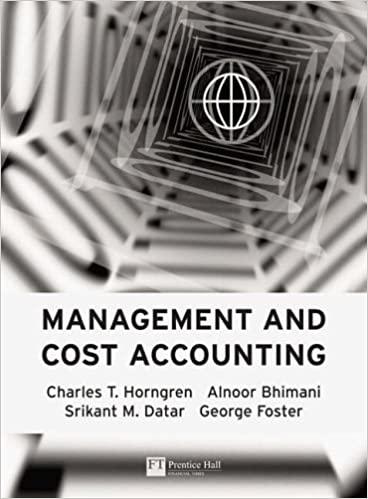Answered step by step
Verified Expert Solution
Question
1 Approved Answer
P12-8A Prepare a statement of cash flows--direct method, and compute cash-based ratios Presented below are the financial statements of Warner Company. WARNER COMPANY Comparative Balance
| P12-8A Prepare a statement of cash flows--direct method, and compute cash-based ratios | ||||||||||
| Presented below are the financial statements of Warner Company. | ||||||||||
| WARNER COMPANY | ||||||||||
| Comparative Balance Sheet | ||||||||||
| December 31 | ||||||||||
| Assets | 2017 | 2016 | ||||||||
| Cash | $35,000 | $20,000 | ||||||||
| Accounts receivable | 20,000 | 14,000 | ||||||||
| Inventory | 28,000 | 20,000 | ||||||||
| Property, plant, and equipment | 60,000 | 78,000 | ||||||||
| Accumulated depreciation | (32,000) | (24,000) | ||||||||
| Total | $111,000 | $108,000 | ||||||||
| Liabilities and Stockholders' Equity | ||||||||||
| Accounts payable | $19,000 | $15,000 | ||||||||
| Income taxes payable | 7,000 | 8,000 | ||||||||
| Bonds payable | 17,000 | 33,000 | ||||||||
| Common stock | 18,000 | 14,000 | ||||||||
| Retained earnings | 50,000 | 38,000 | ||||||||
| Total | $111,000 | $108,000 | ||||||||
| WARNER COMPANY | ||||||||||
| Income Statement | ||||||||||
| For the Year Ended December 31, 2017 | ||||||||||
| Sales Revenue | $242,000 | |||||||||
| Cost of goods sold | 175,000 | |||||||||
| Gross profit | 67,000 | |||||||||
| Selling expenses | $18,000 | |||||||||
| Administrative expenses | 6,000 | 24,000 | ||||||||
| Income from operations | 43,000 | |||||||||
| Interest expense | 3,000 | |||||||||
| Income before income taxes | 40,000 | |||||||||
| Income tax expense | 8,000 | |||||||||
| Net income | $32,000 | |||||||||
| Additional data: | ||||||||||
| 1. | Depreciation expense was $17,500. | |||||||||
| 2. | Dividends declared and paid were $20,000. | |||||||||
| 3. | During the year equipment was sold for $8,500 cash. This equipment cost $18,000 | |||||||||
| originally and had accumulated depreciation of $9,500 at the time of sale. | ||||||||||
| Further analysis reveals the following. | ||||||||||
| 1. | Accounts payable pertains to merchandise suppliers. | |||||||||
| 2. | All operating expenses except for depreciation were paid in cash. | |||||||||
| 3. | All depreciation expense is in the selling expense category' | |||||||||
| 4. | All sales and purchases are on account. | |||||||||
| Instructions | ||||||||||
| (a) | Prepare a statement of cash flows for Warner Company using the direct method. | |||||||||
| (b) | Compute free cash flow. | |||||||||
| NOTE: Enter a number in cells requesting a value; enter either a number or a formula in cells with a "?" . | ||||||||||
| (a) | WARNER COMPANY | |||||||||
| Statement of Cash Flows | ||||||||||
| For the Year Ended December 31, 2017 | ||||||||||
| Cash flows from operating activities | ||||||||||
| Cash receipts from customers | Value | (1) | ||||||||
| Less cash payments: | ||||||||||
| To suppliers | Value | (2) | ||||||||
| For operating expenses | Value | (3) | ||||||||
| For interest | Value | |||||||||
| For income taxes | Value | (4) | Value | |||||||
| Net cash provided by operating activities | ? | |||||||||
| Cash flows from investing activities | ||||||||||
| Sale of equipment | Value | |||||||||
| Cash flows from financing activities | ||||||||||
| Issuance of common stock | Value | |||||||||
| Redemption of bonds | Value | |||||||||
| Payment of dividends | Value | |||||||||
| Net cash used by financing activities | ? | |||||||||
| Net increase in cash | ? | |||||||||
| Cash at beginning of period | Value | |||||||||
| Cash at end of period | ? | |||||||||
| Computations: | ||||||||||
| (1) | Cash receipts from customers | |||||||||
| Sales | Value | |||||||||
| Deduct: Increase in accounts receivable | Value | |||||||||
| Cash receipts from customers | ? | |||||||||
| (2) | Cash payments to suppliers | |||||||||
| Cost of goods sold | Value | |||||||||
| Add: Increase in inventory | Value | |||||||||
| Cost of purchases | ? | |||||||||
| Deduct: Increase in accounts payable | 4,000 | |||||||||
| Cash payments to suppliers | ? | |||||||||
| (3) | Cash payments for operating expenses | |||||||||
| Operating expenses | Value | |||||||||
| Deduct: Depreciation | Value | |||||||||
| Cash payments for operating expenses | ? | |||||||||
| (4) | Cash payments for income taxes | |||||||||
| Income tax expense | Value | |||||||||
| Add: Decrease in income taxes payable | Value | |||||||||
| Cash payments for income taxes | ? | |||||||||
| (b) | Free cash flow | |||||||||
| Net cash provided by operating activities | Value | |||||||||
| Less: Capital expenditures | Value | |||||||||
| Cash dividends | Value | |||||||||
| Free cash flows | ? | |||||||||
Step by Step Solution
There are 3 Steps involved in it
Step: 1

Get Instant Access to Expert-Tailored Solutions
See step-by-step solutions with expert insights and AI powered tools for academic success
Step: 2

Step: 3

Ace Your Homework with AI
Get the answers you need in no time with our AI-driven, step-by-step assistance
Get Started


